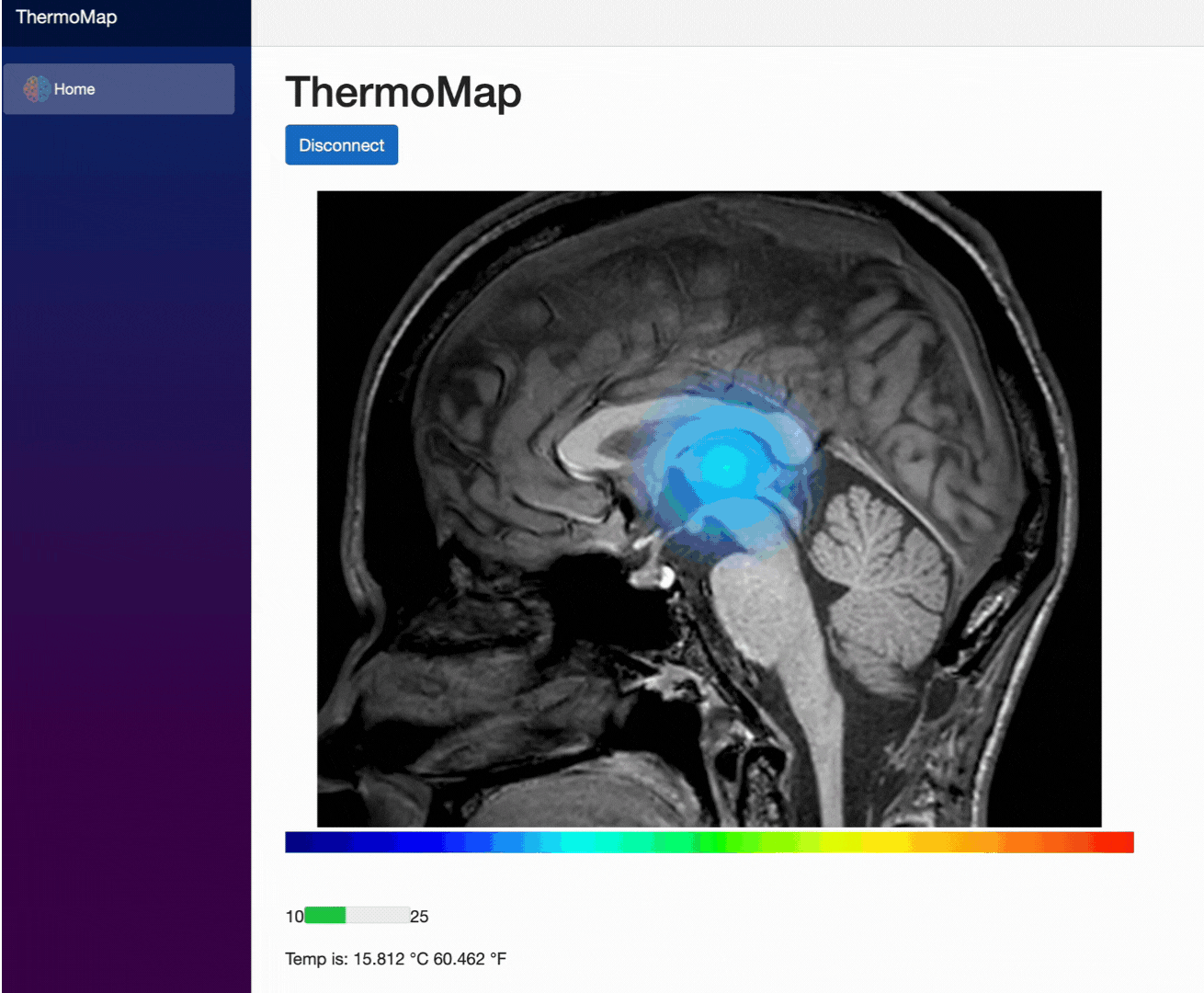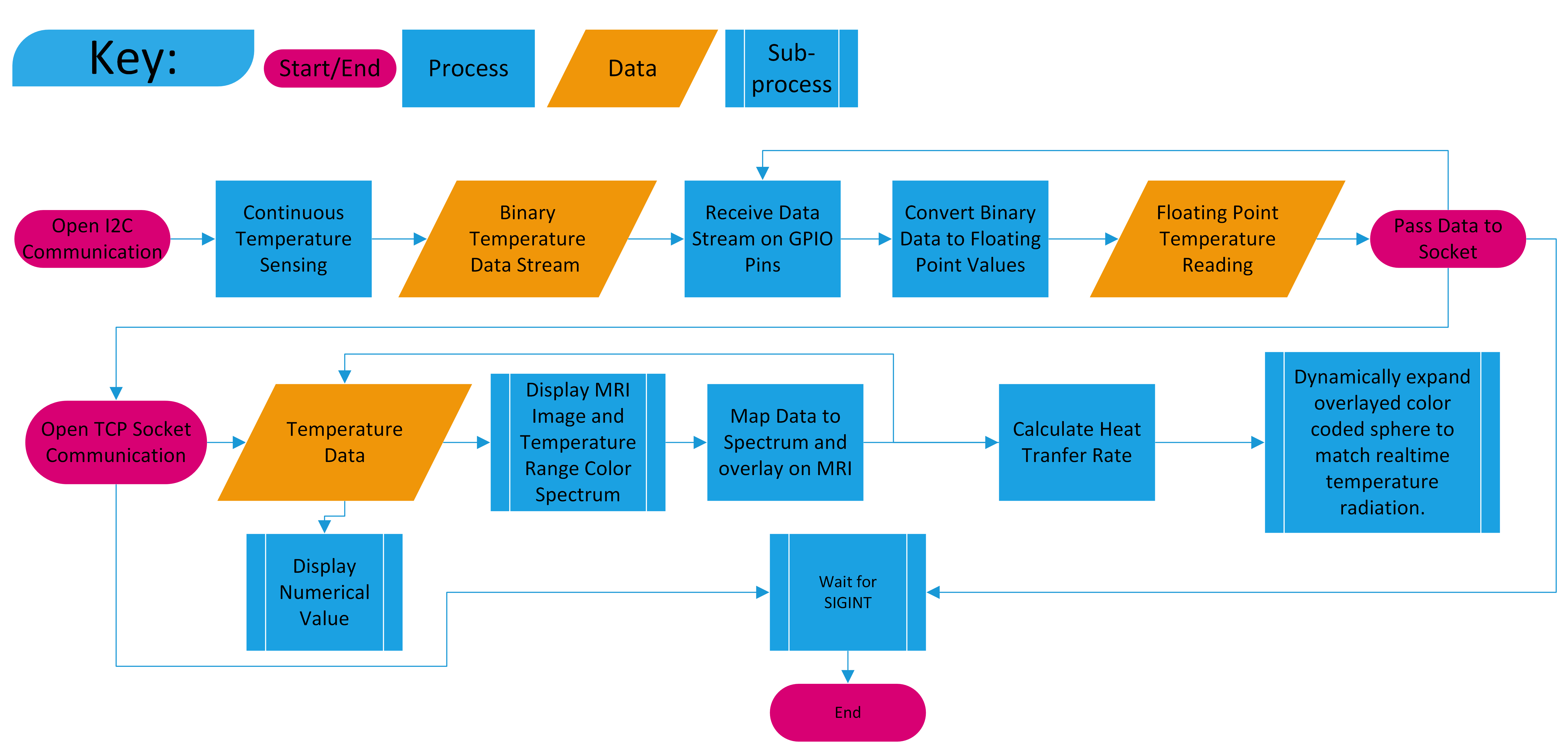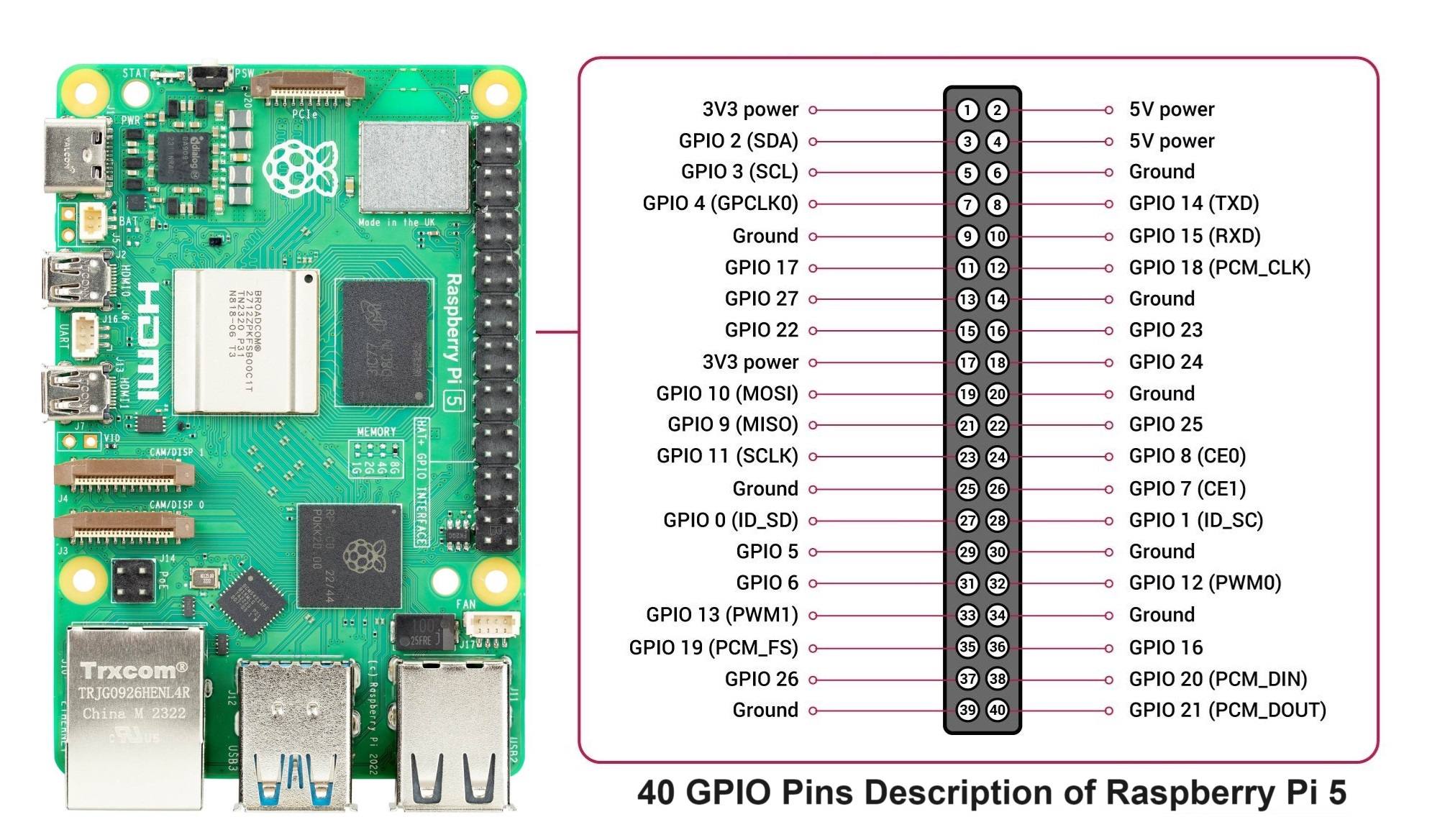Brian Shaver, Cassandra Gasser, & Sari Younan
ThermoMap is software built to continue the work of a previous year's design named Thermectrode. The intended use is to monitor the internal temperature of the brain during Radio Frequency (RF) ablation (burning/melting) procedures in the brain to treat Drug Resistant Epilepsy (DRE). The Thermectrode was a thermistor embedded Stereo-Electroencephalography (sEEG) probe that could monitor brain temperature while also reading EEG data during neuro-ablation procedures. The Thermectrode fed the analog signals to an external circuit that filtered both analog signals (EEG and Temperature) and passed them onto a data acquisition device which then passed it onto a computer via USB protocol. This was then displayed as a graph for the EEG along with a numerical temperature reading.
The ThermoMap team began by overhauling the hardware to digital circuitry. The primary purpose of this change was to make the signal resistant to external electric or electromagnetic noise. An added benefit of the switch to digital circuitry was that the overhaul downsized the hardware significantly. The overhaul replaced the thermistor, the external signal filtering circuit, data acquisition device, and computer with a digital temperature sensor embedded Printed Circuit Board (PCB) connected directly to the Raspberry Pi's general purpose input/output (GPIO) pins. The ThermoMap software is designed to give clinicians all the important information during a neuro-ablation procedure at a glance. The software shows the real time heat transfer within the brain overlaid on patient Magnetic Resonance Imaging (MRI) scans. The software reads the temperature data from the point of digital sensor and is able to model the four dimensional behavior (motion in the x, y, z directions and time) of the heat radiating outward within the brain. The model assumes homogenous behavior of the heat in the brain and thus uses the one dimensional heat equation (listed below) in polar coordinates. The temperature is depicted as realtime expanding concentric circles, color coded to correspond to the temperature increase within each circle.
- VDD ↔ 3V3 Power
- GND ↔ Ground
- SDA ↔ GPIO 2 (SDA)
- SCL ↔ GPIO 3 (SCL)
Click on your OS to get the corresponding .NET installation instructions.
Linux
Ensure ssh is enabled before proceeding.
Install .NET:
curl -sSL https://dot.net/v1/dotnet-install.sh | bash /dev/stdin --channel STSSimplify Path Resolution:
echo 'export DOTNET_ROOT=$HOME/.dotnet' >> ~/.bashrc echo 'export PATH=$PATH:$HOME/.dotnet' >> ~/.bashrc source ~/.bashrcVerify .NET Installation:
dotnet --version
- On your terminal, navigate to the directory containing the software.
cd /Path/to/software/location - Run the following command:
dotnet run - Confirm that one of the output lines shows
http:https://localhost:5232 - In your web browser enter
http:https://localhost:5232into the address bar and press enter. - Click on "Connect"
- Click on the MRI image to indicate location of the heat source.
The first step does not need to be repeated when connected to a Wi-Fi router this was already done on. More details under step 1.2.
- On the Raspberry Pi
- Start the terminal.
- Run the following command
hostname -IThis is a capital i, not a lower case L.- This command returns two IP address versions, IPv4 and IPv6 respectively. IPv4 is used for the next steps.
- These IP addresses remain the same for the same Wi-Fi router. They will change with different routers including different Wi-Fi nodes of the same network.
- On the remote device (i.e. personal computer or laptop)
- Run
ssh -L 5232:localhost:5232 <ConfiguredNameOfRaspberryPi> @ <IPv4Address>Remove spaces around @ symbol and angle brackets before running.- This uses IP tunneling to go straight to port 5232 of the RPi since that is where our software runs.
- Enter the Raspberry Pi password
- Continue on this same device by following the steps in the Local Connection Setup Instructions.
- Run
To the teams who inherit this project from us, listed below are potential avenues of development for the device.
May this project bring you the fulfilment and excitement that would make your younger self look at you and say "This is who I want to be when I grow up."
Harware: (Recommended Strength: Electrical/Electronic Engineering)
The components currently being used, incorporated into the build are small enough, with the exception of the AS6221, to fit inside the SEEG probe (0.8 mm internal diameter) built by the Thermectrode team. Your task would be to replace the AS6221 (1.490 x 1.020 x 0.600 mm) with a slightly smaller digital temperature sensor while also maintaining the same temperature reading accuracy and incorporate it into the SEEG built by the Thermectrode team. You are essentially tasked with combining the two products you have inherited into one.
We recommend this task for BS or MS students in Bioengineering or Electrical Engineering with access to a PCB fabrication and assembly facility/facilities.
Backend Software: (Recommended Strengths: Programming and Mathematics focusing on differential equations and linear algebra)
Currently the software uses the One Dimensional Heat Equation in polar coordinates listed above. Here you can choose one of two tasks. Your task would be to either 1. use a more accurate mathematical model of the thermodynamics of the brain and put it into this software or 2. increase accuracy by rewriting the code to continue to perform at smaller time steps. The current code causes a mathematical divergence towards ±∞ at smaller time steps. One promising method is implementing a Backward Euler Scheme or other vectorizations of the One Dimensional Heat Equation.
We recommend this task for BS, MS, or PhD students in Bioengineering, Computer Science, Mathematics, or Material Science.
Frontend Software: (Recommended Strengths: Programming and Visual/Aesthetic Design)
Currently the software looks fairly basic and needs to be started from the terminal and ran on a web browser. Your task here would be to streamline the operation of the software such as by making it compilable into a .app .exe or .deb that the user simply has to click to use. That way it does not require use of a terminal and/or web browser to operate. When that is complete you would have to redesign the UI to make it more visually appealing, easier to use, and logically designed for its use case and use setting.
We recommend this task for BS students in Bioengineering or either BS or BA students in Computer Science.
Dr. Samuel DeStefano MD, Dr. Steven Lammers PhD, Dr. Eric Roth PhD, whose guidance and aid was invaluable in making this project a reality as well as the members of the Thermectrode team, Alyssa Moreno, Elise Carter, Jacob Bado, & Linea Gutierrez from whom we inherited this project and whose shoulders we stood on to reach the heights we acheived.



